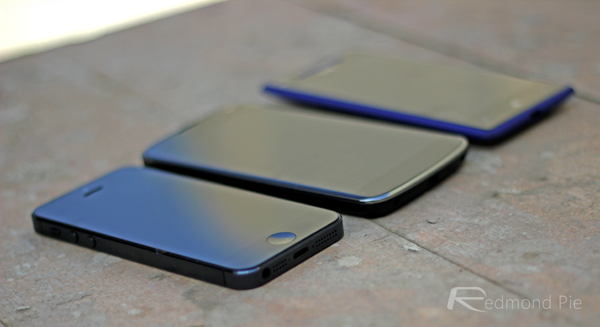So, wireless charging. Plenty of smartphone makers have taken a stab at killing off the charging cable over the years, with Nokia in particular doing its best to make wireless charging into something that’s less of a novelty and more of a real feature. While the likes of Apple have so far refused to bring wireless charging to iPhones and iPads, there’s no doubt that there’s something inherently cool about charging something just by putting it onto a plate.
So, if charging a smartphone by having it sit atop something is awesome, do you know what’s really awesome? Having it charge without touching anything at all. And that’s what researchers in South Korea have been working to make a reality.

The clever people at the Korea Advanced Institute of Science and Technology (KAIST) have released a video that shows a rather interesting-looking device that can, apparently, charge up to 40 smartphones at the same time so long as they are within five meters of the device itself. Not touching it. Not plugged into it. Just near it.
They call this thing the Dipole Coil Resonant System but we prefer to call it by its much more fitting name: Magic! Oh and if smartphones aren’t your thing, the prototype can also power fans or televisions, too.
Speaking of the technology. KAIST’s Chun T. Rim says that the possibility exists for wireless charging to be as common as Wi-Fi, with public places being blanketed in true wireless power. We’re not convinced it’ll be free, though.
“Just like we see Wi-Fi zones everywhere today, we will eventually have many Wi-Power zones at such places as restaurants and streets that provide electric power wirelessly to electronic devices.”
We’re confident when we say that this technology isn’t going to be coming to your local McDonald’s any time soon, but just the fact that such a prototype exists is surely great news for those of us who dare not stray too far from a power outlet. Having notebooks that charge without wires would be a real game changer, and that’s before you start thinking about powering things like electric cars.
It’s taken a while, but we may finally be living in the future.
Check out the video below, and be sure to let us know what you think about it:
(Source: KAIST)
You may also like to check out:
You can follow us on Twitter, add us to your circle on Google+ or like our Facebook page to keep yourself updated on all the latest from Microsoft, Google, Apple and the Web.
